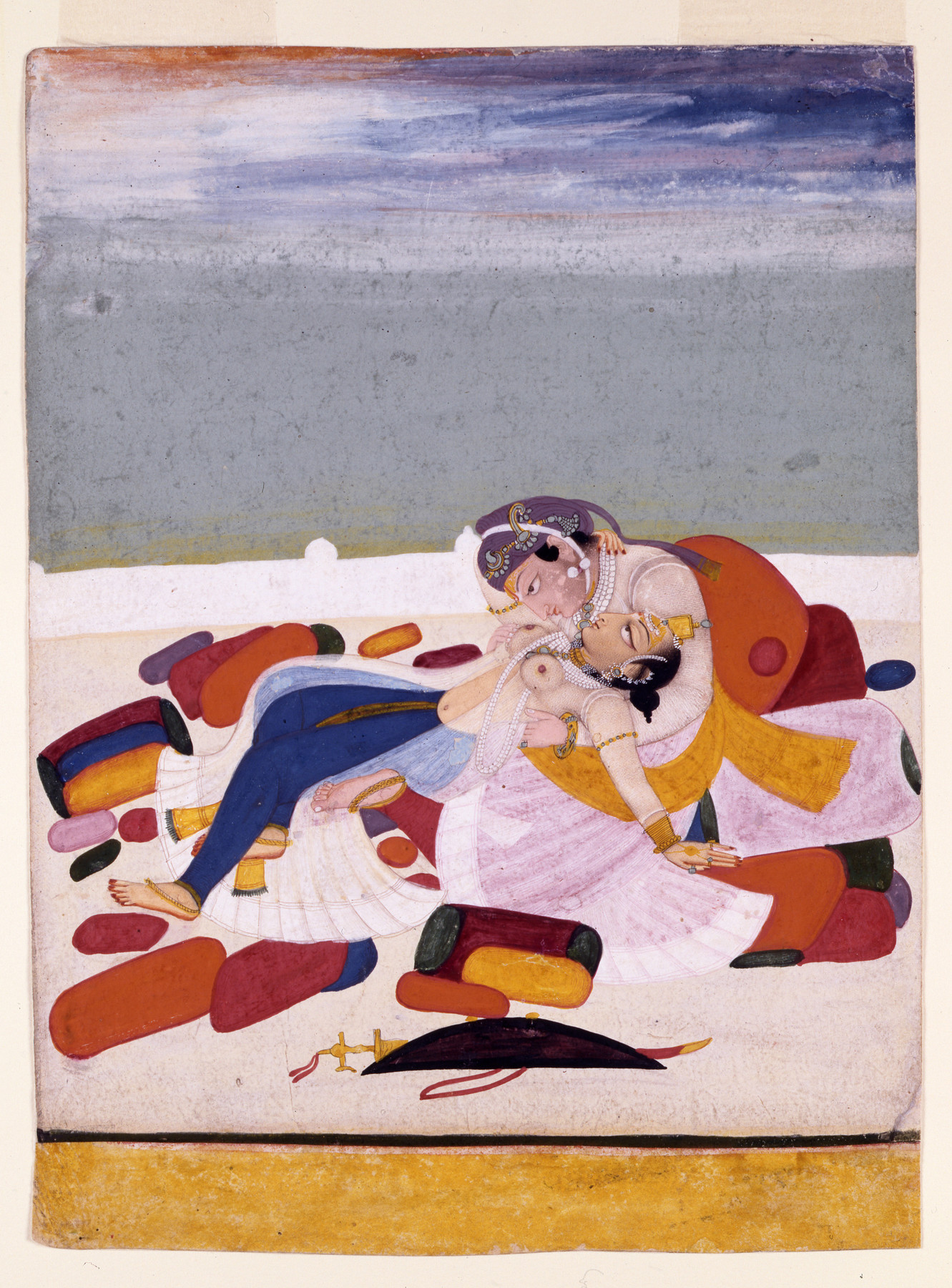Lovers on a Terrace
(India, Nepal, and Tibet)
The artist is almost certainly Chokha, the son of the equally talented Bagata, who flourished during the first quarter of the nineteenth century. Both worked in the ancient state of Mewar, better know at this time as Udaipur and famous today for its romantic pleasure palace and hotel in the middle of a lake.
Few pictures capture the amorous mood with such aesthetic aplomb as this masterpiece. If the lover is Prince Amar Singh of Udaipur, as has been suggested, then the terrace on which they cavort may be the palace on the lake, with hazy, blue-green waters beyond the balustrade and the hint of a monsoon sky above. The picture is a brilliant synthesis of abstract symbolism and concrete physicality. The languidly entwined bodies of the lovers express longing only with their eyes, even while the hot colors of the profligately strewn cushions reflect their burning desire.
Provenance
Provenance (from the French provenir, 'to come from/forth') is the chronology of the ownership, custody, or location of a historical object. Learn more about provenance at the Walters.
Charles Ewart, London [date and mode of acquisition unknown]; John and Berthe Ford, Baltimore, December 1972, by purchase.
Exhibitions
| 2007 | Princes, Places and Passion: The Art of India's Mewar Kingdom. Asian Art Museum, San Francisco. |
| 2001-2003 | Desire and Devotion: Art from India, Nepal, and Tibet in the John and Berthe Ford Collection. The Walters Art Museum, Baltimore; Santa Barbara Museum of Art, Santa Barbara; Albuquerque Museum, Albuquerque; Birmingham Museum of Art, Birmingham; Hong Kong Museum of Art, Hong Kong. |
Geographies
India, Udaipur (Mewar) (Place of Origin)
Measurements
H: 8 9/16 x W: 6 3/8 in. (21.8 x 16.2 cm)
Credit Line
Promised gift of John and Berthe Ford
Accession Number
In libraries, galleries, museums, and archives, an accession number is a unique identifier assigned to each object in the collection.
In libraries, galleries, museums, and archives, an accession number is a unique identifier assigned to each object in the collection.
F.329


